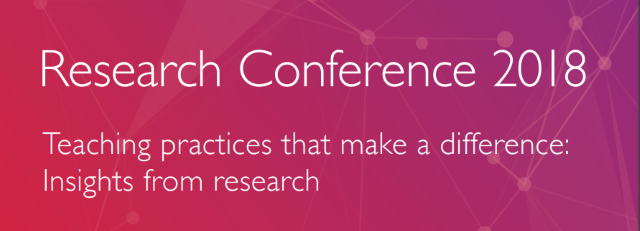
Monday 13 August 2018
Event Title
Communicating student learning progress: What does that mean and can it make a difference?
Start Date
13-8-2018 10:30 AM
End Date
13-8-2018 11:30 AM
Subjects
Reporting (Student achievement), Continuous assessment, Summative evaluation, Learning management systems, Student assessment, Observation, Evidence based practice
Abstract
Traditionally in schools, the main method of communicating students’ academic performance has been the summative end-of-semester report, and the focus of much of this communication has centred on reporting achievement against year-level standards. While semester reporting largely remains established practice, the advent of new school management systems has seen schools embrace a practice known as ‘continuous reporting’. Though well-intended, early analysis would suggest that the potential benefits of this relatively new process are inconsistently understood, and reveal a confusion between progressive instalments of feedback versus feedback on student progress. Such confusion may be indicative of other gaps in the organisational knowledge in schools. For example: How is progress defined? How is progress measured? What is meant by continuous reporting of progress? Who is the audience of continuous reporting? And, importantly, what is the impact of continuous reporting? This paper will present initial findings of a research project that is examining current policies and practices related to communicating student learning progress in Australia, including semester-based and continuous reporting. The project seeks to understand the form, function, and impact of current policies and practices, and provide an evidence-base for identifying processes for communicating student learning progress that will make a difference.
Recommended Citation
Hollingsworth, H., & Heard, J. (2018, August 13). Communicating student learning progress: What does that mean and can it make a difference? [Paper presentation]. Research Conference 2018 - Teaching practices that make a difference: Insights from research. https://research.acer.edu.au/research_conference/RC2018/13august/4
Copyright Statement
Copyright Australian Council for Educational Research 2018
Place of Publication
Melbourne, Australia
Publisher
Australian Council for Educational Research (ACER)
ISBN
9781742865119
Communicating student learning progress: What does that mean and can it make a difference?
Traditionally in schools, the main method of communicating students’ academic performance has been the summative end-of-semester report, and the focus of much of this communication has centred on reporting achievement against year-level standards. While semester reporting largely remains established practice, the advent of new school management systems has seen schools embrace a practice known as ‘continuous reporting’. Though well-intended, early analysis would suggest that the potential benefits of this relatively new process are inconsistently understood, and reveal a confusion between progressive instalments of feedback versus feedback on student progress. Such confusion may be indicative of other gaps in the organisational knowledge in schools. For example: How is progress defined? How is progress measured? What is meant by continuous reporting of progress? Who is the audience of continuous reporting? And, importantly, what is the impact of continuous reporting? This paper will present initial findings of a research project that is examining current policies and practices related to communicating student learning progress in Australia, including semester-based and continuous reporting. The project seeks to understand the form, function, and impact of current policies and practices, and provide an evidence-base for identifying processes for communicating student learning progress that will make a difference.


Comments
Session 2G